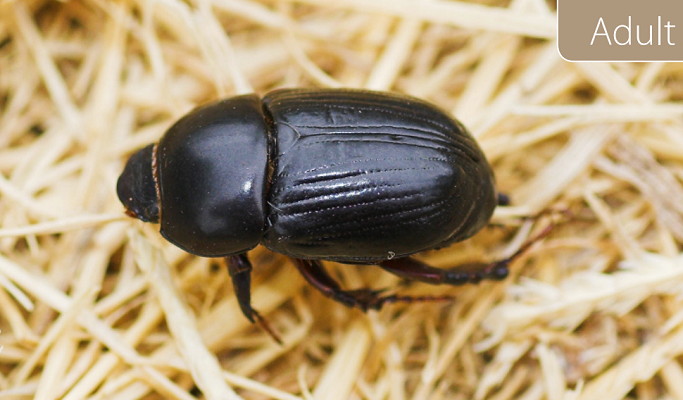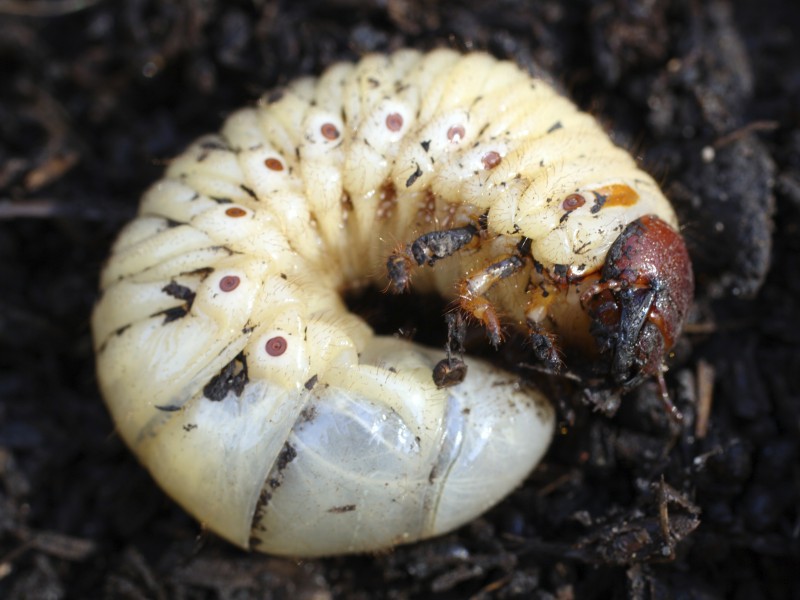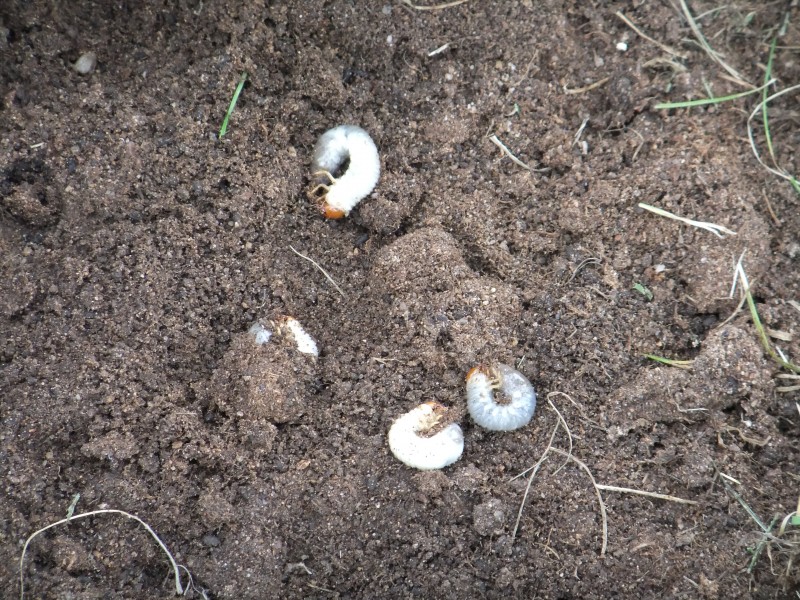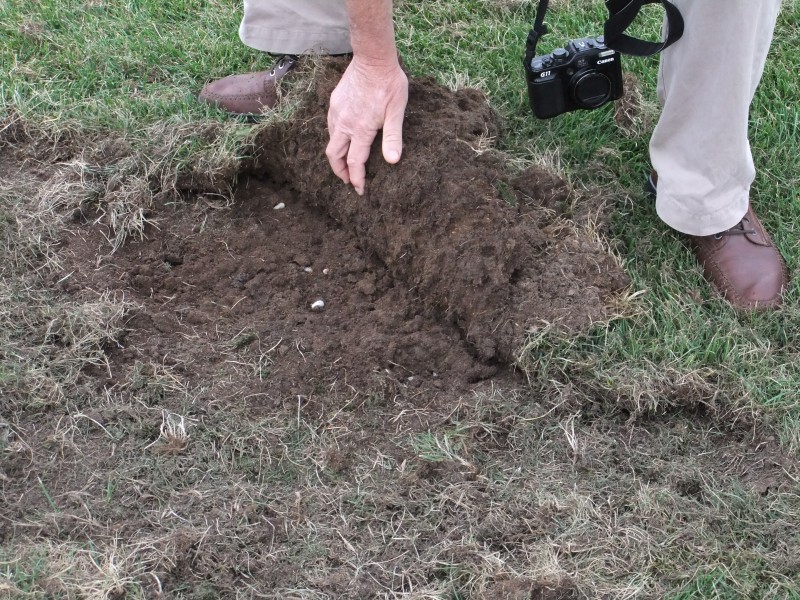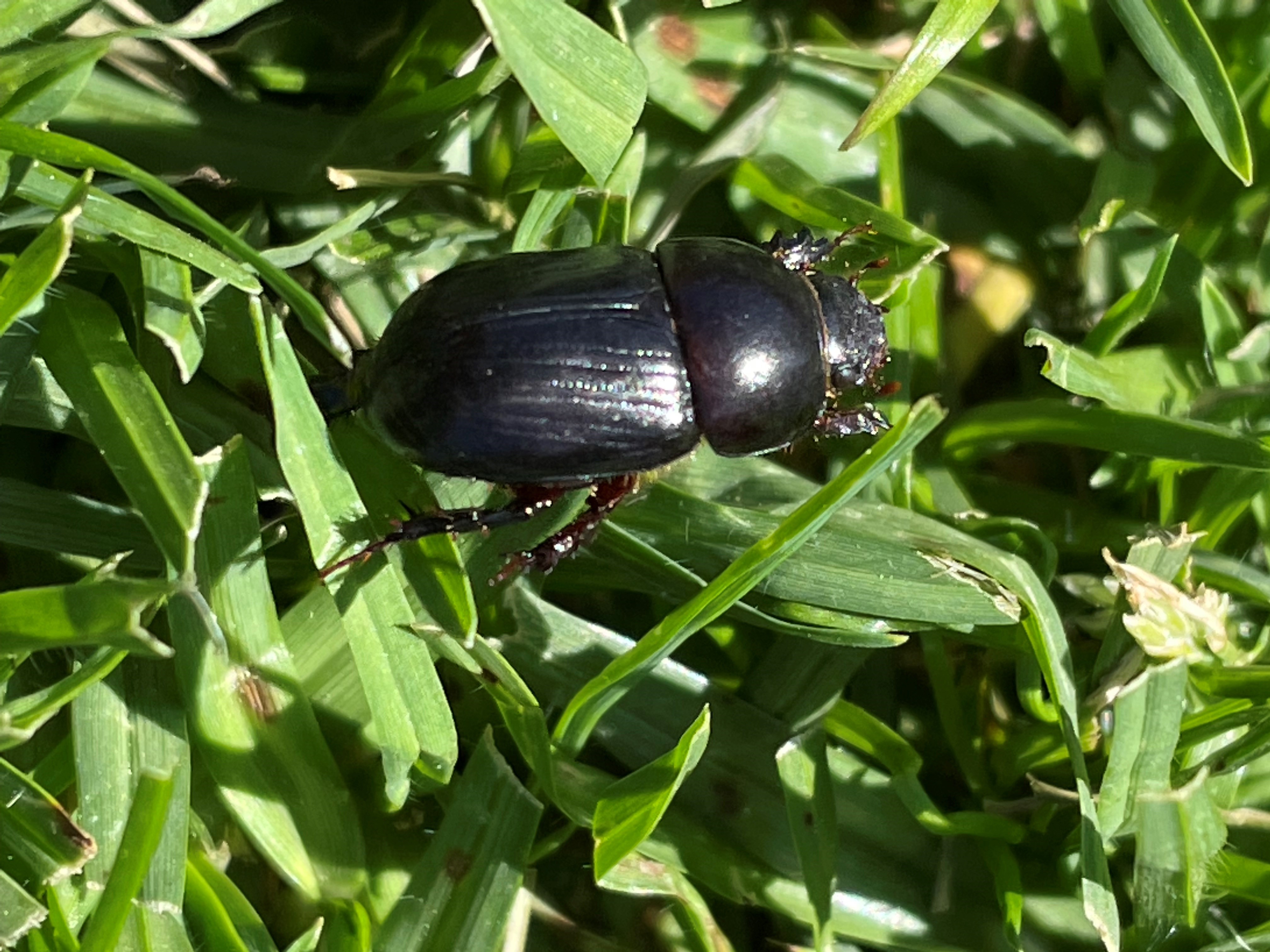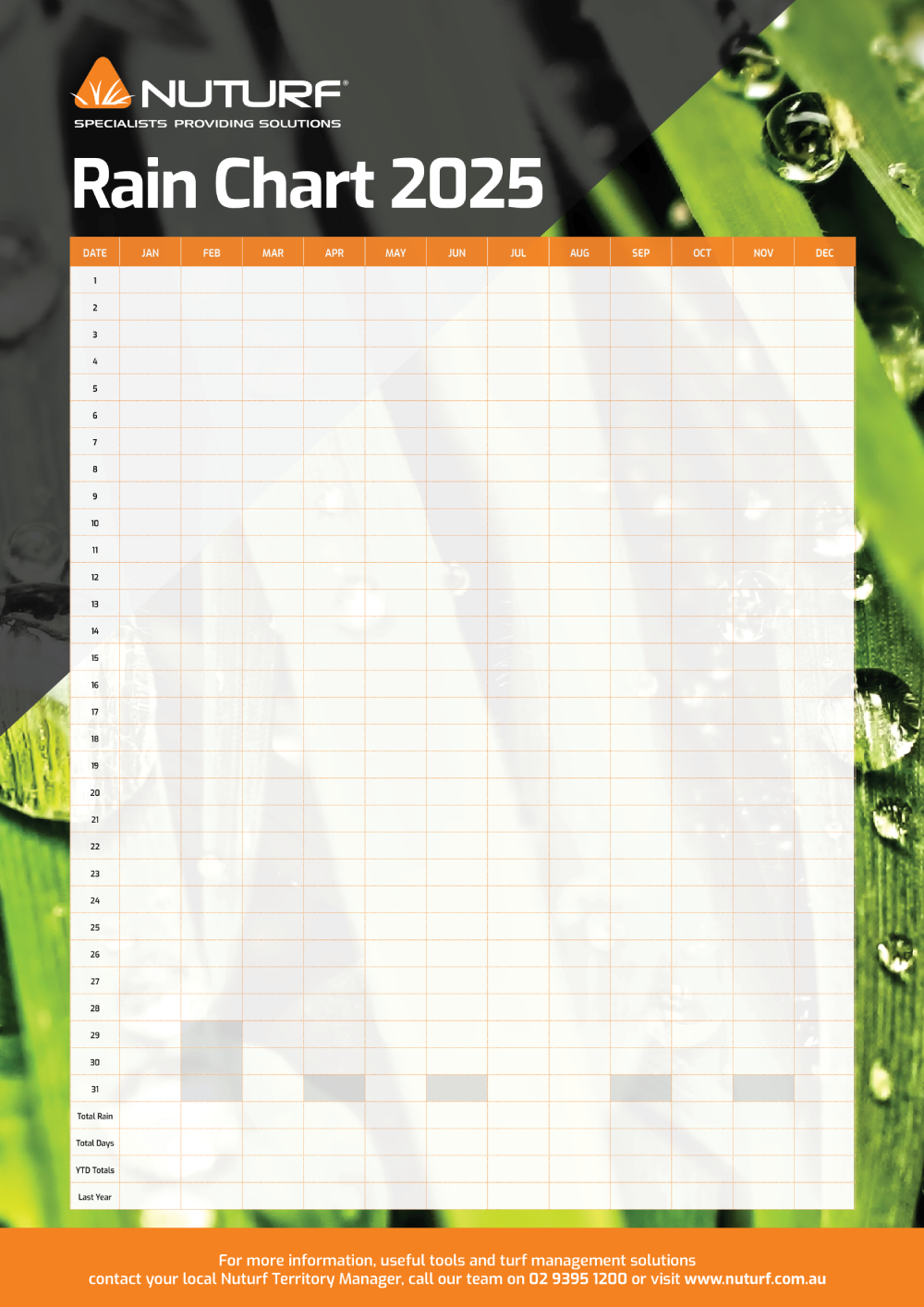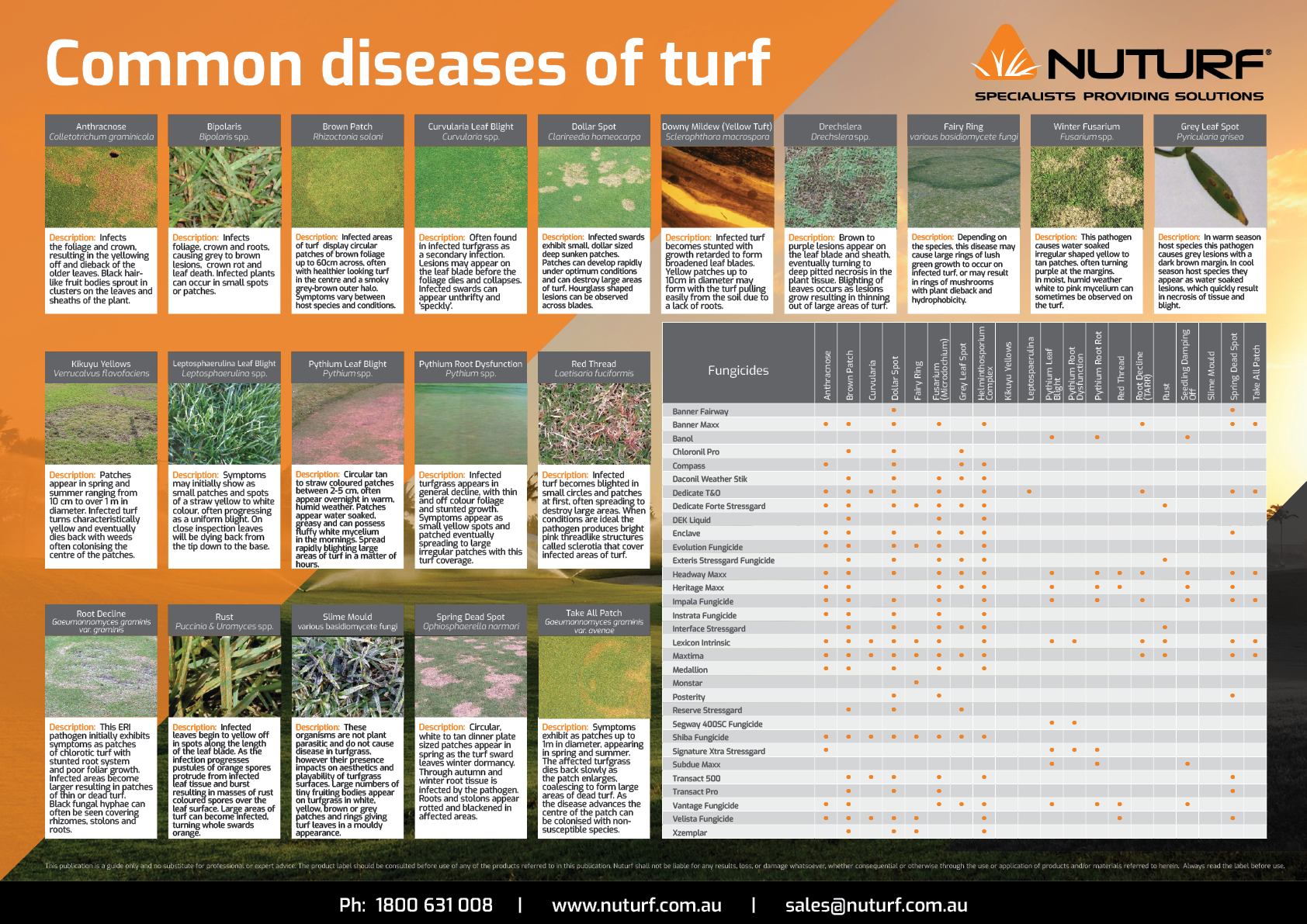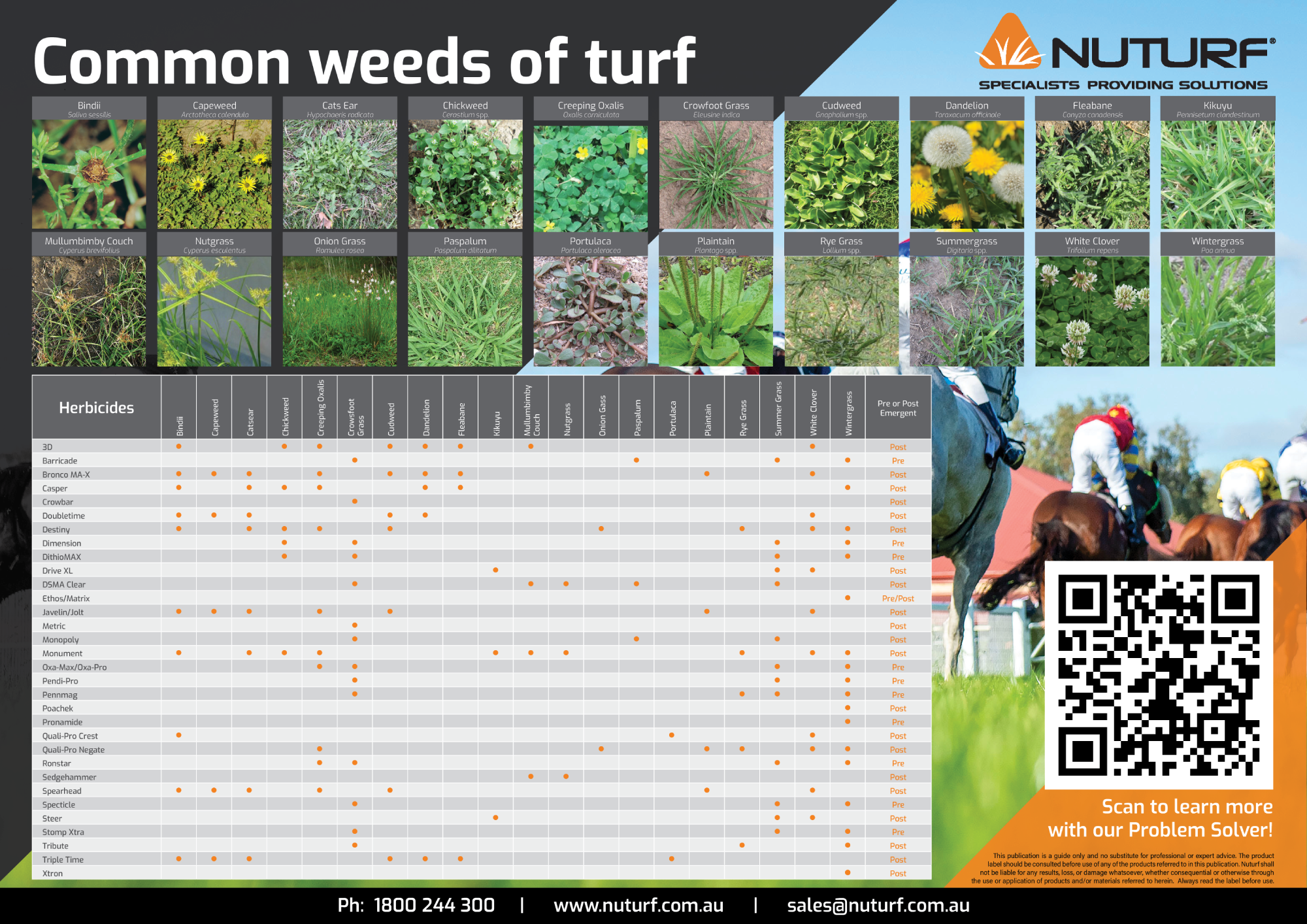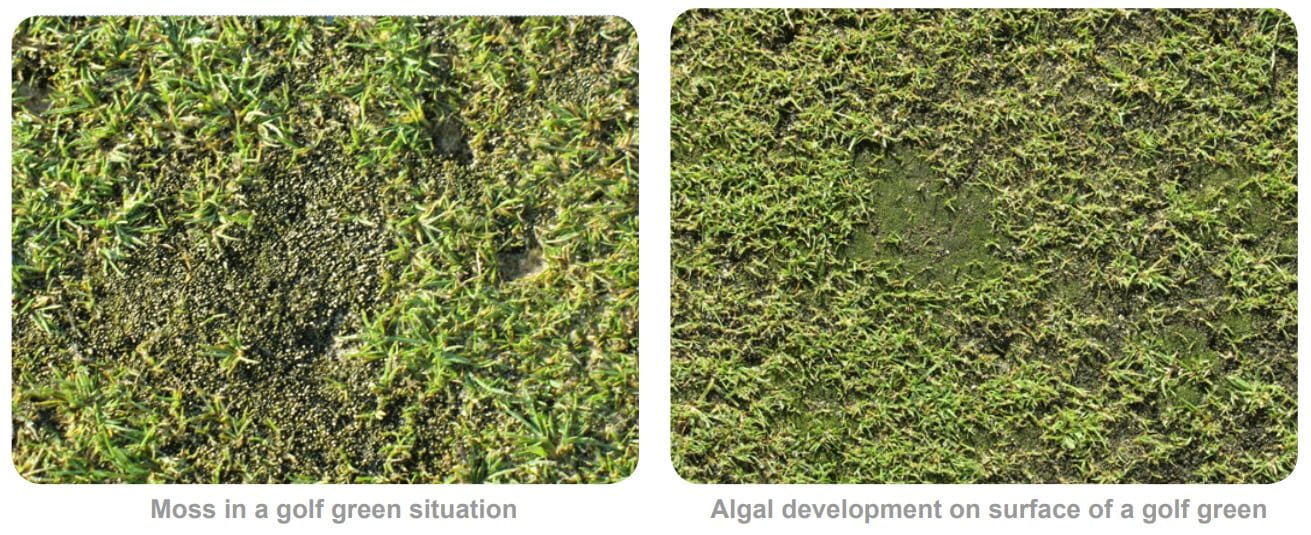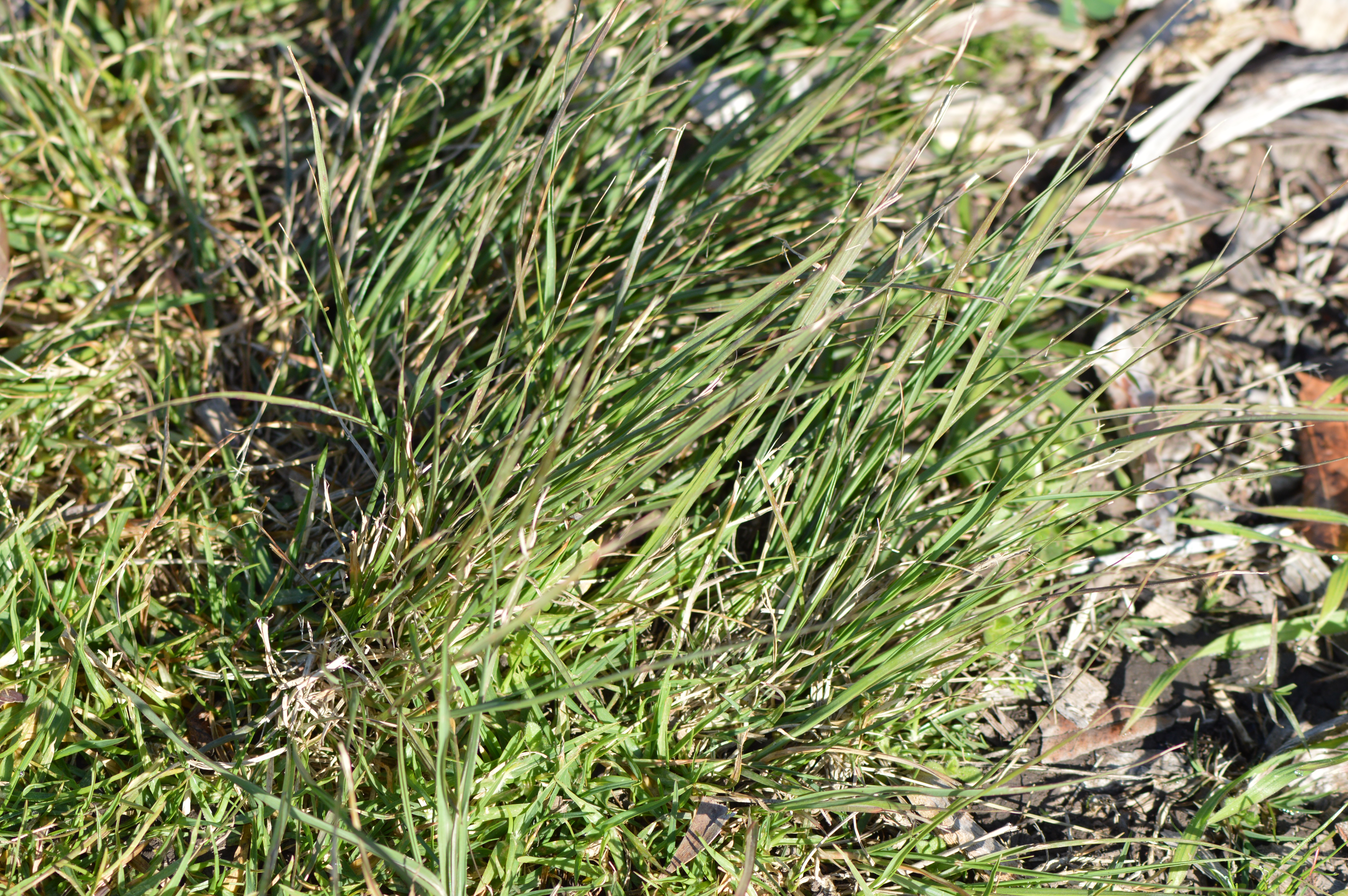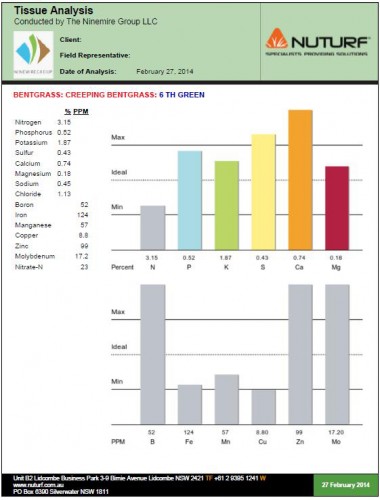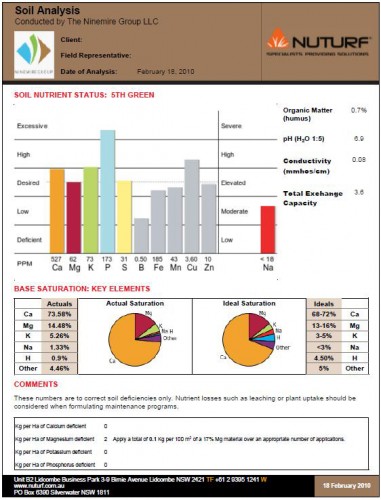African Black Beetle
- Problem Solver
- Pests
- African Black Beetle
African Black BeetleSCIENTIFIC NAME:Heteronychus arator ORDER:Coleoptera How to identify African Black Beetles:The presence of African Black Beetles can be identified by their larvae or mature / adult beetles:
What is the Biology and Lifecycle of African Black Beetles?The female African Black Beetles can lay up to 80 eggs that hatch in 2-5 weeks, depending on temperature the larvae develop through 3 stages. The first instar feeds on decaying organic matter, and as they grow they begin feeding on plant roots. The fully grown larvae (3rd instar) are about 25mm long, creamy white in colour, curled up with 3 pairs of legs. When the larvae are fully grown they build an oval chamber, empty the hind gut and become a pre-pupae. After about a week the pre-pupae develop into pupae. The pupae develop into adult beetles after 1-3 months and emerge after rain or irrigation. |
|
|
Damage Caused by African Black BeetleDamage to turf occurs as African Black Beetle larva feed on the root system of the turf plant. This compromises the plants ability to access water, and results in drought-like symptoms in irregular patterns. As damage worsens large patches of turf can lose root functionality, allowing them to be peeled back off the soil to expose large populations of larvae underneath. The level of damage to turf affected by African Black Beetles will vary depending on a number of factors:
Management Tips for African Black BeetleTo manage or control turf damage from African Black Beetle, it is important to ensure infested areas of turf do not suffer from moisture stress as this will exacerbate the symptoms of damage cause by larvae feeding. |
Product Solutions for African Black Beetle
-
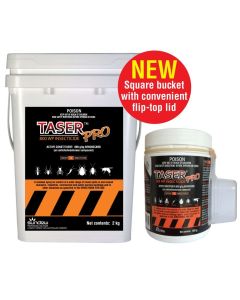 Taser Pro 800 WP Insecticide800g/L Bendiocarb
Taser Pro 800 WP Insecticide800g/L BendiocarbTaser Pro Insecticide is a residual broad spectrum non-repellent spray for the control of a wide range of insect pests in domestic, farm, agricultural, industrial, commercial and public service buildings.
$1,523.50 incl. GST$139.70 incl. GST -
 Clear Up Bio 360 HerbicideActive: 360g/L Glyphosate (IPA Salt)
Clear Up Bio 360 HerbicideActive: 360g/L Glyphosate (IPA Salt)Clear Up Bio 360 Bi-Aquatic is a non selective herbicide containing 360g/L of the active ingredient glyphosate present in the form of an isopropylamine (IPA) salt.
$36.30 incl. GST$96.80 incl. GST$239.80 incl. GST$7,040.00 incl. GST -
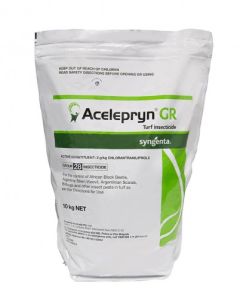 Acelepryn GR (Granule) InsecticideActive: 2g/kg Chlorantraniliprole
Acelepryn GR (Granule) InsecticideActive: 2g/kg ChlorantraniliproleAcelepryn GR insecticide provides unmatched, season-long grub and caterpillar control in a single application.
$104.50 incl. GST$167.20 incl. GST -
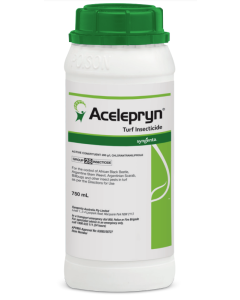 Acelepryn InsecticideActive: 200g/L Chlorantraniliprole
Acelepryn InsecticideActive: 200g/L ChlorantraniliproleAcelepryn is an insecticide that provides safe and effective control of a wide range of turf-damaging insects while also minimising the impact on the environment.
$118.80 incl. GST$517.00 incl. GST -
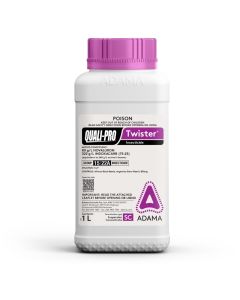 Quali-Pro Twister InsecticideActive: 320g/L Indoxacarb
Quali-Pro Twister InsecticideActive: 320g/L IndoxacarbQuali-Pro Twister is a highly effective insecticide for robust knockdown and residual control of Argentine Stem Weevil, Billbug and African Black Beetle in turf.
$385.00 incl. GST -
 Spinner InsecticideActive: 200g/kg Cyantraniliprole
Spinner InsecticideActive: 200g/kg CyantraniliproleSpinner turf insecticide is a highly systemic insecticide providing rapid control of insect larvae and including Stem Weevil.
$639.10 incl. GST -
 Initiator Systemic Plant InsecticideActive: 200 g/kg Imidacloprid
Initiator Systemic Plant InsecticideActive: 200 g/kg ImidaclopridInitiator Systemic Plant Insecticide plus Fertiliser from Bayer. Initiator tablets provide enhanced growth and long-lasting protection against the damage caused by various insects that attack containerised, newly planted and established plants.
$304.70 incl. GSTOut of stock -
 Tempo XTRA InsecticideActive: 50g/L Imidacloprid
Tempo XTRA InsecticideActive: 50g/L ImidaclopridTempo XTRA is a unique dual mode of action insecticide designed to control tough pests in Turf and Ornamental situations.
$484.00 incl. GST -
 Tetrino Turf InsecticideActive: 42.8g/l Tetraniliprole
Tetrino Turf InsecticideActive: 42.8g/l TetraniliproleTetrino Turf Insecticide controls insect pets in turf including on golf courses, sports fields, bowling greens, race tracks, recreational lawns and turf farms.
$616.00 incl. GST -
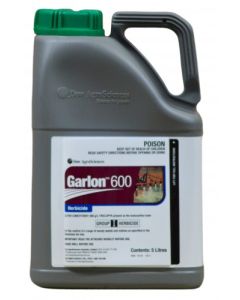 Garlon 600 HerbicideActive: 600g/L Triclopyr
Garlon 600 HerbicideActive: 600g/L TriclopyrGarlon 600 herbicide provides post-emergent control of a wide range of woody and noxious weeds using a variety of application techniques.
$289.30 incl. GST -
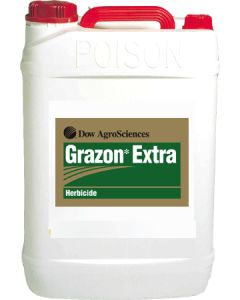 Grazon Extra HerbicideActive: 300g/L Triclopyr
Grazon Extra HerbicideActive: 300g/L TriclopyrGrazon Extra provides control of a wide range of environmental and noxious and herbaceous weeds with the combined formulation containing the three active constituents 30% Triclopyr, 10% Picloram and 0.8% Aminopyralid.
$442.20 incl. GST -
 Vigilant II HerbicideActive: 43g/kg Picloram
Vigilant II HerbicideActive: 43g/kg PicloramVigilant II is an easy-to-use solution, for hard-to-kill woody weeds, wild tobacco tree, rhizomes plants, and herbaceous weeds.
$85.80 incl. GST -
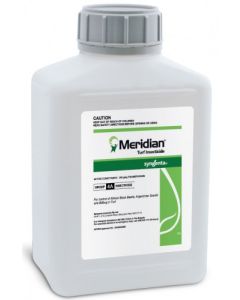 Meridian Insecticide 1kgActive: 250g/kg Thiamethoxam
Meridian Insecticide 1kgActive: 250g/kg ThiamethoxamMeridian insecticide is a water dispersible granule that provides effective control on a wide variety of insects and grubs, killing through both contact and ingestion.
$138.60 incl. GST -
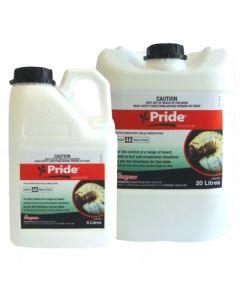 Pride Insecticide 5LActive: 200g/L Imidacloprid
Pride Insecticide 5LActive: 200g/L ImidaclopridPride insecticide contains the active constituent of 200g/L Imidacloprid. Pride’s systemic action provides control of a range of insect pests in turf and ornamental situations.
$172.70 incl. GST -
 Compel Pro Insecticide 5LActive: 100g/L Bifenthrin
Compel Pro Insecticide 5LActive: 100g/L BifenthrinCompel Pro is a unique water-based formulation containing 100g/L of the active ingredient bifenthrin. Compel Pro is formulated for the control of a range of pests in Turf and Ornamental plants. Available in 5L and 20L.
$200.20 incl. GST -
 Columbus Insecticide 1LActive: 250g/L Thiamethoxam
Columbus Insecticide 1LActive: 250g/L ThiamethoxamColumbus is an excellent translaminar and systemic insecticide. Columbus insecticide has contact, stomach and systemic activity, for the effective control of African Black Beetle, Argentine Scarab and Billbug larvae. Columbus is suitable on broadacre areas such as turf farms, sporting fields, parks, ovals and fairways.
$93.50 incl. GST -
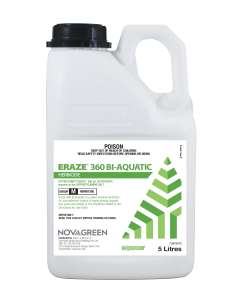 Eraze 360 Biaquatic HerbicideActive: 360g/L glyphosate
Eraze 360 Biaquatic HerbicideActive: 360g/L glyphosateEraze 360 Bi-Aquatic is a non-selective herbicide containing 360 g/L of the active ingredient glyphosate present in the form of an isopropylamine (IPA) salt.
$58.30 incl. GST$96.80 incl. GST$166.10 incl. GST -
 Pride InsecticideActive: 200g/L Imidacloprid
Pride InsecticideActive: 200g/L ImidaclopridPride insecticide contains the active constituent of 200g/L Imidacloprid. Pride’s systemic action provides control of a range of insect pests in turf and ornamental situations.
$172.70 incl. GST$551.10 incl. GST -
 Compel Pro InsecticideActive: 100g/L Bifenthrin
Compel Pro InsecticideActive: 100g/L BifenthrinCompel Pro is a unique water-based formulation containing 100g/L of the active ingredient bifenthrin. Compel Pro is formulated for the control of a range of pests in Turf and Ornamental plants. Available in 5L and 20L.
$200.20 incl. GST$497.20 incl. GST -
 Columbus InsecticideActive: 250g/L Thiamethoxam
Columbus InsecticideActive: 250g/L ThiamethoxamColumbus is an excellent translaminar and systemic insecticide. Columbus insecticide has contact, stomach and systemic activity, for the effective control of African Black Beetle, Argentine Scarab and Billbug larvae. Columbus is suitable on broadacre areas such as turf farms, sporting fields, parks, ovals and fairways.
$93.50 incl. GST$715.00 incl. GST
JOIN OUR NEWSLETTER NOW!
Be the first to hear about the latest specials, products, tips and ideas.


